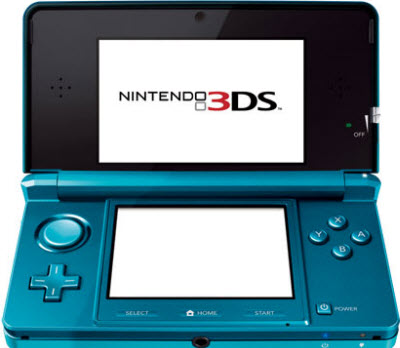 After five days of non-stop action at the E3 video game show last week, I’ve come up with my list of the top innovations in the video game industry. Naturally, the much-ballyhooed Nintendo 3DS is at the top.
After five days of non-stop action at the E3 video game show last week, I’ve come up with my list of the top innovations in the video game industry. Naturally, the much-ballyhooed Nintendo 3DS is at the top.
These new technologies span everything from the tools used to make games to the hardware that runs them. Based on these cool new ideas, I expect the video game industry will be instrumental in getting gamers to spend more dollars on interactive entertainment than they already do. Those who are worried about stagnation in the video game industry need not fret. It looks like the industry has figured out how to keep us entertained for a long time to come. That’s important, considering growth has been choppy for the past couple of years. Check out my descriptions of the best innovations of E3 below. And stay tuned — I’ll be writing about the best video games at E3 in a separate post.
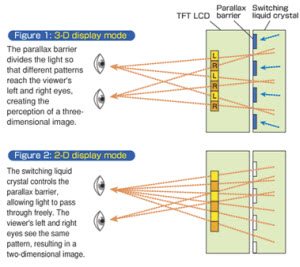 1. Nintendo 3DS (coming sometime before March 31, 2011).
1. Nintendo 3DS (coming sometime before March 31, 2011).
Nintendo stole the show again with the new handheld gaming system that can display stereoscopic 3D images without requiring users to wear 3D glasses. People lined up at Nintendo’s booth, waiting hours to get a short glimpse of it. I got to peek at it and play games such as Starfox, Steel Diver, and others as I tested the quality of the screen. After a half hour or so, it was clear to me that the quality of the screen is great and the stereoscopic 3D adds real depth to the 3.5-inch screen. You can adjust the sharpness of the picture and make the secondary “ghost” images go away by adjusting a slider control on the handheld.
AI Weekly
The must-read newsletter for AI and Big Data industry written by Khari Johnson, Kyle Wiggers, and Seth Colaner.
Included with VentureBeat Insider and VentureBeat VIP memberships.
Satoru Iwata, chief executive of Nintendo, confirmed the screen uses “parallax barrier” technology which we believe comes from Sharp. (Hitachi also makes such a display). The parallax barrier is a layer that is added on top of a liquid crystal display. The barrier does the same thing as polarizing glasses, directing light from each image slight differently. The images appear in a “sweet spot” at a certain distance from the screen, and those images are separated just enough so that your left and right eyes will see them slightly different and your brain will composite them so that you see the image in stereoscopic 3D. This means you can’t move around a lot when you are playing a 3DS game; you have to stay in the sweet spot. That’s a small trade-off.
As noted earlier, the graphics processing technology comes from Digital Media Professionals in Japan. That chip provides a combination of the graphics processing performance needed to drive the 3D screen and low power to accommodate longer battery life. Since there is a permanent parallax barrier layer on the screen, it may be very hard to make the 3DS compatible with older DS games; Nintendo has not confirmed whether the 3DS will play DS games or not. Dozens of game publishers are supporting the new technology. More than 70 games are in the works for the 3DS.
 2. Microsoft Kinect (debuts Nov. 4).
2. Microsoft Kinect (debuts Nov. 4).
Kinect is the new name for the motion-sensing technology previously known as Project Natal. It combines face recognition, voice recognition, and full-body motion sensing in an accessory for the Xbox 360 video game console. When you play a game with Kinect, you simply move around and the 3D camera detects your movements and translates them into game controls. You can use Kinect to control a DVD movie, using voice commands such as “pause” or hand gestures to rewind a scene. With Xbox Live, you can use Kinect to initiate a video phone call with a friend. And you can use it to play games such as an upcoming Star Wars lightsaber title. In those games, you don’t hold a controller as you do with a Wii; you pantomime the movements of, say, swinging a sword, and the action is translated into the game.
I played a number of Kinect games, including the racing game Forza Motorsport for Kinect coming in 2011. I worried that the Kinect devices would have bad latency, or long response times that would make the games unplayable or inaccurate. But the games I tried were very responsive. The device captured my movements just about anywhere I stood in a room, so long as I wasn’t too close to the camera. And the games get you off the couch, exercising with frenzied body movements. There are some hardcore games in the works, but it looks like Microsoft will have to rely on the party games to get Kinect off the ground this fall.
Microsoft has a lot of cool party games in the works, including Dance Central (from Harmonix), Kinect Adventures, Kinect Sports, and Kinectimals. The latter is a Nintendogs-like game where you take care of cuddly tiger or lion cubs, petting them using your hand movements and communicating with them via voice commands. Kinect is a mid-life kicker for Microsoft’s console business, but the device could be a lot more than the Wii on steroids. Pricing isn’t yet announced.
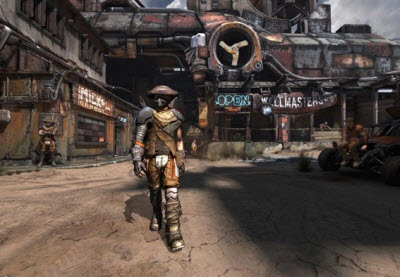 3. Rage and id Tech 5 (2011).
3. Rage and id Tech 5 (2011).
id Software‘s Rage is a car combat and first-person shooter game that looked better than any other game at the show. That’s because it uses id Tech 5, the newest game engine from id co-founder and graphics genius John Carmack. This is thanks to some fancy work that Carmack has done with textures, or the surfaces of 3D objects in the game.
With the earlier title Enemy Territory: Quake Wars, id used something called MegaTextures, which used a single large texture to represent the static terrain in a game. It allows for large amounts of detail and variation in a large area, but it uses very little memory. With the Rage game coming in 2011, Carmack expanded this to what he now calls Virtual Texturing, which can be used for all of the images in a game, not just the terrain. That’s why id Tech 5 can display extremely detailed images — even on the Xbox 360 — and run them at a fast 60 frames per second. So not only do the images look cool, they are lightning fast. In Rage, that means there are cool scenes such as battles where lots of enemies come at you at once and — as ugly as the mutants look — the graphics are beautiful.
The sad thing is that id isn’t going to put much emphasis on licensing its technology to all comers, as it has in the past. That’s because it’s now part of ZeniMax Media, owner of Bethesda Softworks, and it is focusing on using the engine in its own games.
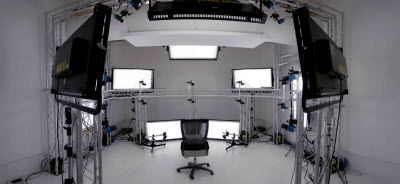 4. Depth Analysis MotionScan capture system (available for game developers now).
4. Depth Analysis MotionScan capture system (available for game developers now).
The uncanny valley is a well-known obstacle for animated graphics. It holds that the more an animator tries to render a realistic replica of a human face, the more eerie and strange the image looks. Companies such as Mova and Image Metrics have been trying to fix that problem, allowing animators to map someone’s face to a digital image.
 Sydney, Australia-based Depth Analysis says it can capture someone’s face using 32 different cameras with its MotionScan 3D motion-capture system. This system produces a digital file that can be processed fully into an animation of a face in about a day. Normally, it takes artists about 30 days to do the same thing, and even then, the realism of the face is questionable. You can take the animated head and plop it onto an animated body. Audio of the person speaking is recorded in parallel and so everything is in sync.
Sydney, Australia-based Depth Analysis says it can capture someone’s face using 32 different cameras with its MotionScan 3D motion-capture system. This system produces a digital file that can be processed fully into an animation of a face in about a day. Normally, it takes artists about 30 days to do the same thing, and even then, the realism of the face is questionable. You can take the animated head and plop it onto an animated body. Audio of the person speaking is recorded in parallel and so everything is in sync.
The results of Depth Analysis’ are stunning. The face is truly believable, the expressions on the face seem real, and the lip-synching appears to be flawless. RockStar Games has used the technology in its upcoming L.A. Noire game coming this fall. It means there will be more believable, realistic characters in video games, making them much more film like.
The resolution that the cameras can capture is 4,000 x 4,000 pixels, or enough to capture details as small as 1 millimeter on a person’s face. So yes, it will capture pimples, moles and any other facial features smaller than that. And it can capture expressions such as eyes watering up with tears.
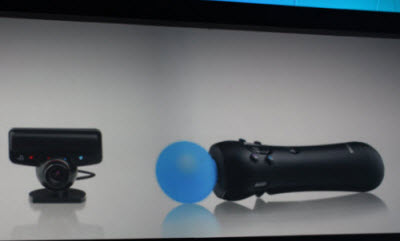 5. Sony Move (launches for PlayStation 3 on Sept. 19).
5. Sony Move (launches for PlayStation 3 on Sept. 19).
Sony’s answer to the Wii is Move, a wand-like controller that will sell this fall for just $49.99 and will be used in conjunction with a bunch of Move-enabled games. You hold the Move controller, which has various buttons on it for shooting guns or other game controls, in your hand. You can swing it around like a sword or pose like an archer to make actions happen inside games.
It requires a PlayStation Eye ($29.99) motion-detecting camera and, if you’re playing a first-person shooter game, you need a Nunchuk-like pointing device which you hold in your other hand. A complete bundle will sell for $99. Sony touts the Move as much more accurate for motion-sensing games, such as golf or table tennis. It can detect a slight twist of the wrist, which in table tennis means a certain kind of spin can be applied to a ball.
But Nintendo’s own Wii MotionPlus controller works pretty well in a similar kind of function already, as Nintendo demoed last week with its new Legend of Zelda: Skyward Sword game for the Wii. The Move may be better in terms of accuracy, but I’m not sure it’s a huge difference.
Sony showed the Move working with a lot of different games, from party games like TV Superstars to hardcore games such as Socom 4. The shooting games aren’t that easy to do with the Move controller. While it may be an improvement on the Wii, it may not be enough to wow mass market gamers. Sony promises that it will work particularly well with games where you hold something — like a wizard’s wand in the upcoming Sorcery game. It may not be the biggest innovation in game play, but it should satisfy the Sony fans who haven’t had their fill of Wii-like games.
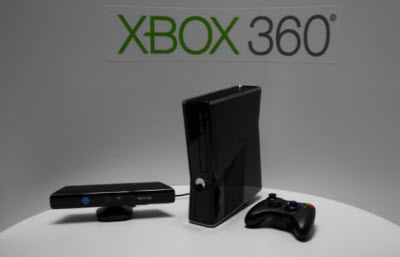 6. Slimmer version of Xbox 360 (shipping now for $299).
6. Slimmer version of Xbox 360 (shipping now for $299).
Microsoft needed to play catch-up ever since Sony launched the PS 3 Slim in August, 2009. Finally, Microsoft is shipping a slimmer, black version of the Xbox 360. Beyond being smaller, the system reflects the state of the art in terms of what Microsoft can jam into a $299 box. It includes a combination 45-nanometer chip that puts the microprocessor and graphics functions on the same piece of silicon. The box is about 15 percent smaller in volume than the original Xbox 360, and it has built-in 802.11n networking, five universal serial bus ports (getting rid of the proprietary memory units), and capacitive touch buttons.
The box has a smaller power brick and consumes less power. It has fans, but they operate almost silently. The larger 250 gigabyte hard drive is now inside the box, covered by a vent. Microsoft confirmed it will ship a $199 version of the ball in the fall, presumably with some things left out of the box. This isn’t huge on the innovation scale, but it keeps Microsoft competitive with Sony. And this time, the device should be more reliable. There is no “red ring of death” indicator light on this console.
 7. 3D TVs (shipping from TV makers such as Panasonic, Sony and Samsung).
7. 3D TVs (shipping from TV makers such as Panasonic, Sony and Samsung).
When it comes to innovations, I’m not sure how much we need this one. These TVs require you to wear 3D glasses and they cost $2,500 or more. That puts them out of the range of the budgets of many gamers, who may view this as a “nice to have novelty” rather than a must-have. The 3D images do look better in certain scenes and in certain cases, but it’s quite easy to get disoriented while wearing 3D glasses.
In a first-person shooter game, it is quite cool to see what is closer to you and what is farther away when you are trying to shoot something. But in a first-person shooter game such as Sony’s Killzone 3, the glasses cut off your peripheral vision. That makes you vulnerable to attack from the sides. By contrast, the Sony game Motorstorm Apocalypse looked great in 3D. That’s because peripheral vision is not as critical when you are racing a car down a track. Meanwhile, it was cool to see debris kicked up as you raced through the streets of a city in a state of collapse. Sony promises that this technology is only going to get better.
The simple thing to do about this technology is wait. The prices for the TVs will come down and the games using them will launch. Until that happens, 3D TVs are still something that can wait. It would be nice to see TVs arrive that don’t require you to use glasses, but it’s hard to make these types of TVs with sufficient quality right now.
VentureBeat's mission is to be a digital town square for technical decision-makers to gain knowledge about transformative enterprise technology and transact. Learn More